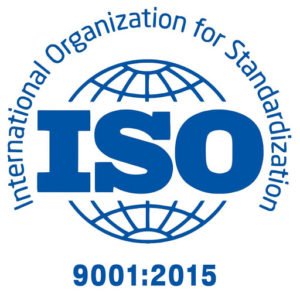SOFTWARE QUALITY ASSURANCE (SQA)

Suventure adheres to ISO 9001:2015
Best Practices
- Focus on the User Experience
- Automation and Continuous Integration
- Test Coverage and Code Coverage
- Shift-Left Testing
- Quality Over Quantity
- Bug Prevention
- Smart Testing
AGILE
customer satisfaction
Welcome charge
deliver frequently
working together
motivated team
Quality Decisions
Working software
constant pace
Good Design
simplicity
self organization
reflect and adjust

- Individuals and interactions over processes and tools
- Working software over comprehensive documentation
- Customer collaboration over contract negotiation
- Responding to change by following a plan
Agile methodology has been one of the most successful methods for delivering projects in a timely manner. The entire project cycle is divided into multiple task lists and tasks. Then the development cycle starts and is allocated to multiple resources to finish the allocated tasks with the timeline attached to each task.
MANAGE RISKS AND INCREASE ROI
You know how it works – every project changes between inception and completion. You need an agile software company that can effortlessly pivot as the need arises and has a proven process to reduce risk while driving innovation forward.
With Suventure Agile Practices, we simply integrate timely course corrections into active development while maintaining forward momentum and progress – that is true value driven with the adoption of Agile!
OFFERINGS
Continuous delivery transformation: Optimizes system design, development, testing, and operations by removing silos and implementing a new vision. Continuous delivery transformation prioritizes collaboration and agility to deliver high-value software quickly, helping you keep pace with changing customer needs, evolving technologies and dynamic markets.
Digital Agile: Creates user personas / prototypes that adhere to lean UI/UX principles to deliver on tight timelines. This allows you to demo working software at the end of every two-week sprint and test it with real users, so you can be confident that your customers will love your solution by the time the project is complete.
Analytics : Delivers reports and dashboards at the completion of every two-week sprint so you can speed adoption, enhance customer acceptance, and greatly reduce time to market. Agile analytics allow you to get the information you need more quickly by developing an accelerated data structure so you can adapt and shift to meet changing business requirements with minimal rework.
SCRUM

WHAT IS SCRUM?
Scrum is an agile way to manage a project, usually software development. Agile software development with Scrum is often perceived as a methodology; but rather than viewing Scrum as methodology, think of it as a framework for managing a process.
SCRUM ROLES
- Scrum Team. A number of employees who participate in a project. A Scrum team is self-organized and may include specialists of different job titles and professional levels – they all contribute project’s success.
- Scrum Master. A coach of a development team who coordinates it and controls its performance. The main objective of this role is to provide high-quality teamwork.
- Product Owner. A project stakeholder represents a Client, business, customers, or users. This role is fully responsible for the relevance and prioritization of a Product Backlog. The main objective of this role is to provide the right goal for the development team.
SCRUM TOOLS / ARTIFACTS
- Product Backlog.A document where all the features of a project are listed in the form of user stories and prioritized.
- Sprint Backlog. A document where all the features for one sprint are listed in the form of user stories and prioritized.
- Scrum Task Board. A visible form of a Sprint Backlog and development progress.
- Sprint and Release Burndown Charts. A chart where the net change in the amount of work remaining is shown.
SCRUM DEVELOPMENT PROCESS
- Work with Software Requirements – Gathering. Documenting. Prioritization.
- Sprint Planning Meeting – At this stage, the team takes the top requirements from the Product Backlog and plans how many of them it can develop during the coming sprint. Thus, the team defines a Sprint Backlog. A Product Owner reviews the Product Backlog and makes adjustments; a Scrum Master selects the development tools and infrastructure.
- Sprint Implementation – While a sprint is going, the team designs, builds, tests, and deploys new features. A Scrum Mater removes any obstacles that affect teamwork and enhances the performance of the team. In addition, a Scrum team has daily standup meetings that last no more than 15 minutes and reviews its progress, synchronizes tasks, and discusses possible difficulties.
- Sprint Review Meeting – It is almost a final stage of a Scrum development process when the development team shows what has been implemented. As a rule, the team shows a demo version of a software product to the project’s stakeholders. The main thing here is to get feedback from the stakeholders to know what needs to be improved and what to do further. Sprint review can be informal and doesn’t require a detailed presentation. The team focuses on the main results of the sprint.
- Sprint Retrospective – Each sprint is finished with a retrospective where the team with its Scrum Master and Product Owner discuss how productive the accomplished sprint was, what opportunities the team had, and which of them were realized or not and why.


